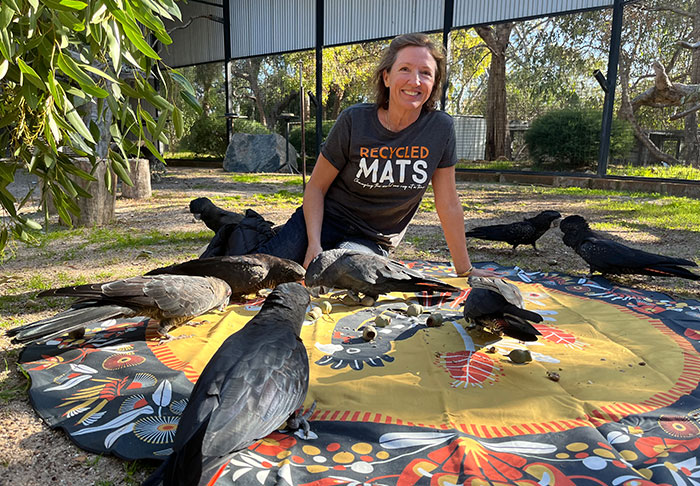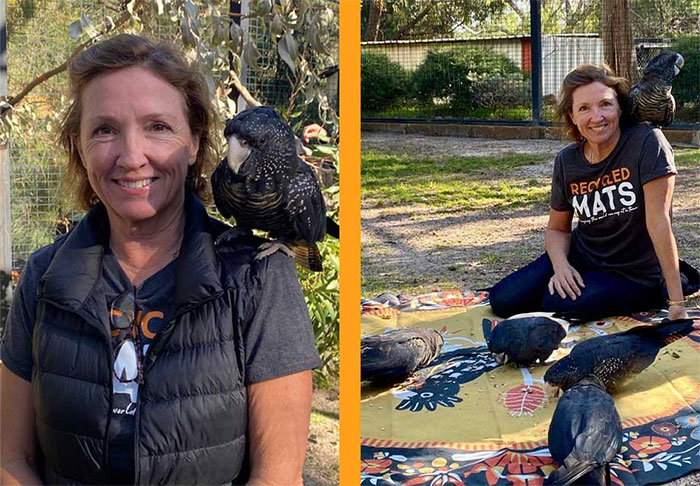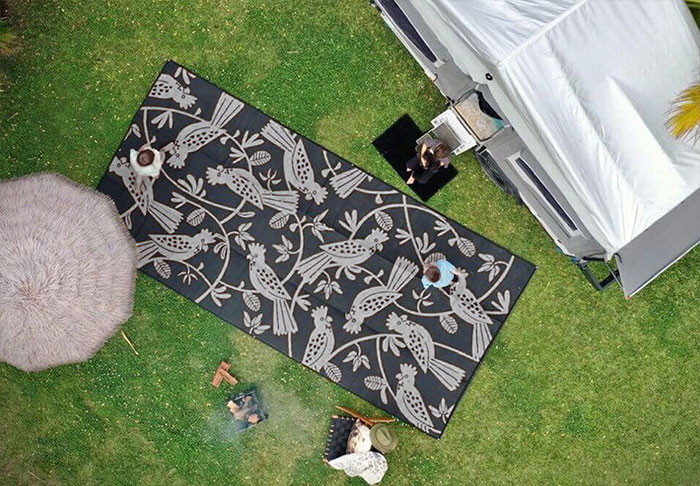2 June 2023
Birds of a feather…..

Search Results:
Search Results:
2 June 2023

Along with kookaburras and emus, the black cockatoo is one of Australia’s most iconic bird species. Found across the country, these charismatic birds are distinctive in both looks and sound, their loud caws heard resonating across open woodlands as well as dense forests. Sometimes seen in flocks of up to 500 birds, they can be raucous and very noisy though are by nature, rather shy of humans.
There are five species found in Australia - all of them identified by their dark feathers and characteristic tails with either red, yellow or white markings - including the Red-tailed, Carnaby’s, Baudin’s, Glossy and Yellow-tailed black cockatoos.
Forest Red-tailed black cockatoos are a sub-species of the Red-tailed cockies and together with Carnaby’s and Baudin’s are only found in the southwest of Western Australia. All three are deemed Threatened, with the Forest Reds currently listed as Vulnerable, the Carnabys listed as Endangered and the Baudins as Critically Endangered. It’s estimated that there may be as few as 3,500-4,500 Baudin’s black cockatoos remaining in the wild! The Carnaby cockatoo fares no better and is officially considered “likely to become extinct”.
.jpg)
The Kaarakin Black Cockatoo Conservation Centre is the only dedicated black cockatoo sanctuary in the world and is located just 30km from Perth’s CBD. Deriving its name from the Noongar word Karrak, which refers to the call of the red-tailed black cockatoo, the centre not only rescues, rehabilitates and releases injured birds, but it also educates the public through its tours, open days and school visits. As well as this, it facilitates research and helps restore degraded habitats, both within and outside the centre.
In May 2023 we had the opportunity to visit the centre in person and get up close and personal with some of their glorious residents. What a treat! With approximately 250 birds in-house, there’s plenty to do to keep the 3 part-time staff (Sam, Lou and Kloe) and the 160 volunteers busy. From cleaning, feeding, revegetating, treating, and releasing, the centre’s staff attend to the birds 7 days a week, 365 days a year.

Spread out over 40 acres, the centre is located in the beautiful Perth foothills in what was once a private wildlife park. Facilities include a series of large aviaries (the largest over 64m in length), a small “hospital” facility, open enclosures (for a few lucky resident dingoes and emus), waterways and walkways, onsite housing and public restrooms.
Birds are brought in from the entire southwest region, from Gingin to as far south as Albany, some of them rescued from poachers, others injured from vehicle strikes, gunshots, or bird attacks. Yes, ravens are known to attack cockatoos, tearing their tail feathers out and impeding their ability to fly. In 2022 alone, Kaarakin responded to over 210 rescues and travelled more than 32,000km both rescuing and releasing birds!
Some as young as just weeks old, the resident birds range widely in age and are housed according to their needs and rehabilitation status. Other feathered residents are never released – for a variety of reasons, they’re unable to be rehabilitated to the point where they can be safely released back into the wild. These “long-termers” make the ideal mascots for the centre’s popular tours, especially with school groups, and will comfortably approach or perch on a shoulder.

So why are these special birds endangered?
Unfortunately, habitat loss due to urbanisation and development is the most common reason for the threat posed to our black cockatoos. Removal of native bush for housing, forestry, mining and agriculture is a huge problem for much of our native fauna, often forcing these animals into zones where they face danger from dog and cat attacks, vehicle strikes and human intervention.
Competition from other birds for nesting sites is also an issue as black cockatoos require large tree hollows for breeding. Baudin, in particular, will only nest in jarrah and marri trees that are at least 200 – 500 years old, limiting their nesting options even further.
Together with this, the shooting of birds by farmers continues (esp. in fruit orchards) as does the illegal poaching of eggs for the wildlife trade.
Black cockatoos not only mate for life but also lay just one, sometimes two eggs per year so their reproduction rate is very low and heavily reliant upon available and safe nesting grounds. They also require vast amounts of their preferred food i.e. seeds which they extract from the hard pods of eucalypts, casuarinas and banksias, with one bird eating up to 100 honky nuts per day!
Kaarakin receives no government funding and is solely financed by donations and fundraising efforts. This makes it incredibly challenging to keep upgrading and expanding the facilities so that the increased demand for rescue (created by the ever-increasing urban sprawl) can be met.
Inspired by their work, in late 2021 Recycled Mats launched its Cockatoo Crackle outdoor mat, 10% of the proceeds from which goes directly to supporting the Kaarakin’s endeavours. At the time of writing and with your help, we’ve donated more than $15,000 to the centre, funding the rehab and release of over two dozen injured cockatoos. As the birds are chipped and tracked, we can confidently say that all of them are alive and well, enjoying the life they were always meant to lead.

Our Cockatoo Crackle mat is 2.4 x 5m
Black cockatoos can live up to 50 years old so there’s a very good chance that some of our Recycled Mats birds will outlive us! We take pride in knowing that with your help, our efforts will live on in future generations of these very special birds.